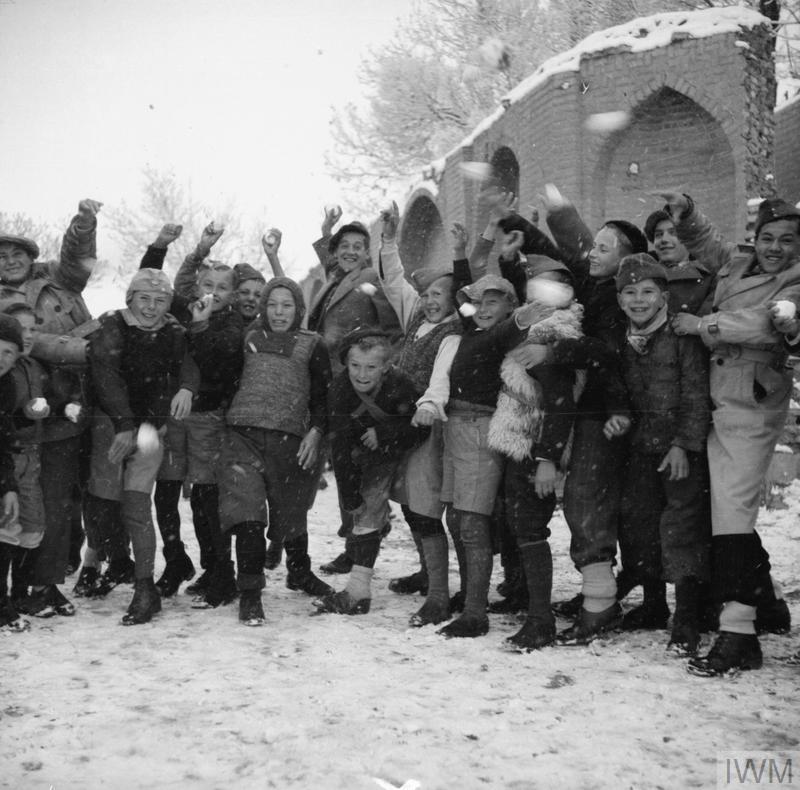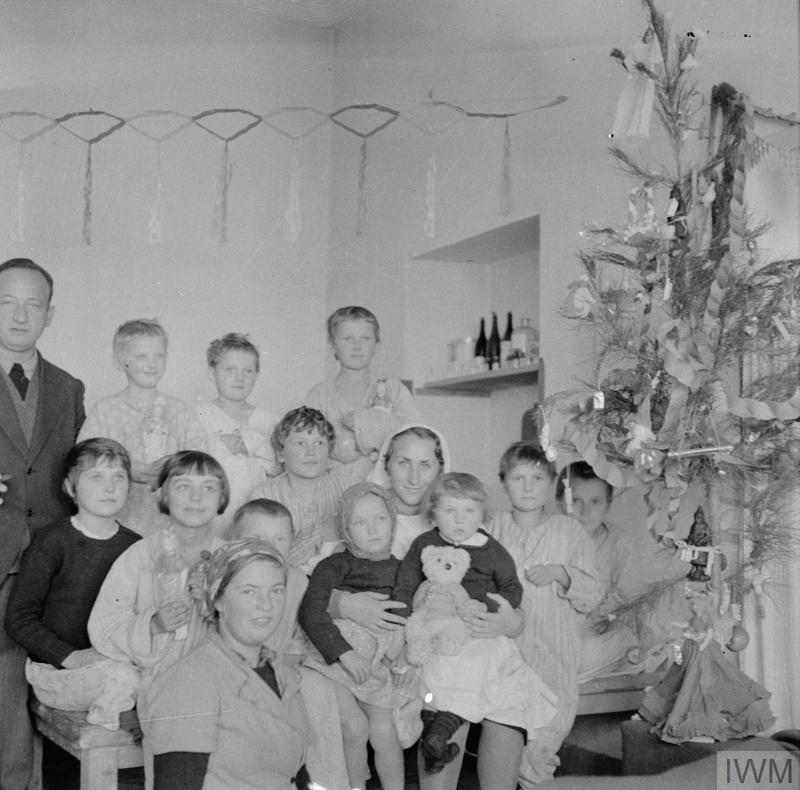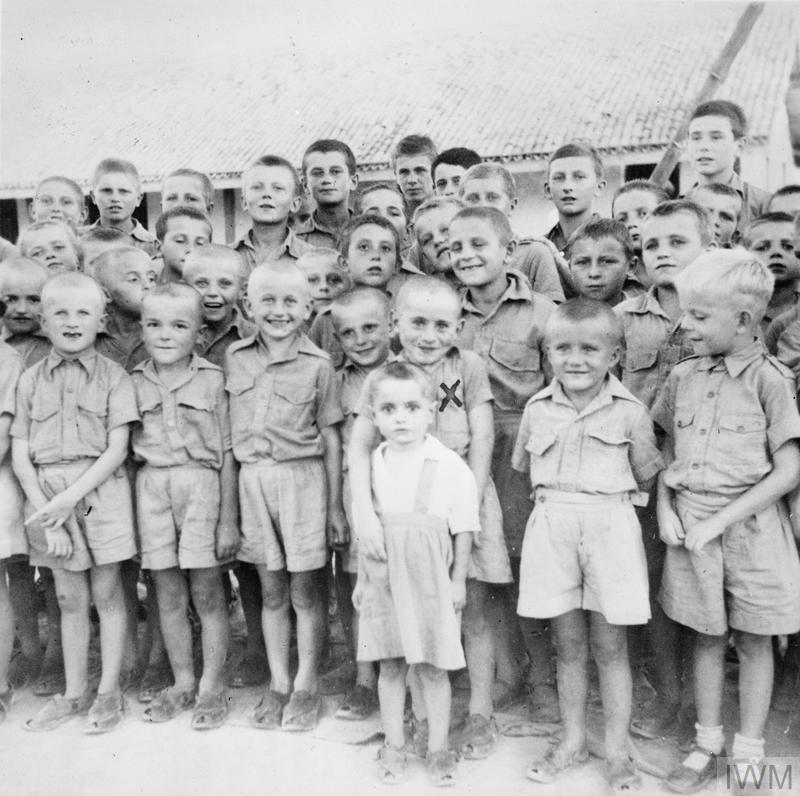The story told by Diana Forster in her artwork ‘Somewhere to Stay‘ narrates a series of displacements, as Polish deportees were moved from one place to another, with no control over their destination. However, it also records some periods of respite from the relentless journeying, when they found refuge in unexpected places. For Diana Forster’s family, Iran proved one such place. As she narrates:
Anna Sokulska Forster and her family were treated with great generosity by people in Persia (now Iran), who brought gifts of clothes and food for the newly arrived Polish refugees. From Pahlevi [where they had been housed in Red Cross tents] they were moved to Tehran, which for most of them was the first beautiful and peaceful place they had seen in three or four years. They finally had somewhere lovely to stay. Schools were established in the makeshift camps, staffed by teachers who had survived the forced migration. Many of the children, including many orphans, were still exhausted and ill and they were moved to Isfahan, where the mild climate could help them to recover. Many hospitable locals opened their homes (including some palaces) to accommodate them. Between 1942 and 1946 four schools were established in the city and Isfahan became known as the city of Polish children.


Right: Polish refugees in Persia: children in a hospital ward enjoying a Christmas treat (1942). Credit: Sgt. Hansbury, Army Film and Photographic Unit. © IWM, item E 21191.
These photographs show Polish children being looked after in Iran, and between them they evoke different aspects of refugee experiences. The image on the right was taken in a hospital ward, where children were being cared for by Polish medical staff. The adults in the picture (and those on the other side of the lens) remind us of the many actors who assist refugees along their journey, sometimes while managing their own displacement. The Christmas tree and toys show the keeping of religious and cultural traditions from home, an act of resilience amid so much upheaval. Continuity of customs can help to counter the sense of uncontrollable, never-ending change, and celebration becomes an act of care in itself.
In the picture on the left, a group of boys throws snowballs at the photographer. Their smiling faces and contagious energy burst out of the image. This might be a scene from a 1940s school or youth group; not the typical visuals of forced migration. And yet it is a refugee portrait, one that invites us to rethink how we picture displaced people. Respite and refuge take many forms: while some children required nursing, others relished the chance to play. Both are equally important amid displacement. The dynamism of the snowball shot reminds us that we should not think of refugees only as suffering or struggling. While the hospital photograph invites sympathy, the other generates empathy – because we have all enjoyed a good snowball fight and can see ourselves in those children, despite the vast gap in their life experiences and ours.
From cookery classes to football games to English lessons, the photographic footage from Polish refugee camps in Iran shows a diversity of experiences. While some people needed medical help and time for recovery, others enjoyed familiar pastimes or acquired new skills. The close proximity of the military is visible in several shots. Two of the boys in the snowball scene above wear military cloth hats; and in another snowy picture, children can be seen pelting a British army officer as he enjoys throwing snow back. In fact, these images were taken by Sergeant Hansbury, a member of the British No. 1 Army Film and Photographic Unit. Polish refugees were also photographed by journalists and humanitarian organisations. Silvia Salvatici’s chapter ‘Sights of Benevolence: UNRRA’s Recipients Portrayed’, in Heide Fehrenbach and Davide Rodogno’s edited volume Humanitarian Photography: a history (Cambridge 2014), discusses that narratives that were forged in this period about refugees (among other groups) through photography.

Persia was not the only destination for Polish refugees. Others ended up in India and other countries connected to Britain and the Allies. Here too schools and orphanages were opened to look after displaced children, many ill and traumatised after two years’ on the move.
For example, a children’s camp was opened at Balachadi in the present-day state of Gujarat, using land lent by Maharajah Jam Saheb Digvijayasinhaji of Nawanagar. There was space for up to one thousand children at the Balachadi camp. In the photograph on the right, a group of orphans can be seen, dressed in the camp’s uniform. The boy marked “X” carried his baby sister (also in the picture, right in front of him) to the Polish relief lorries which were aiding with evacuations after the death of their parents in a Soviet Gulag. Like the Polish camps in Iran, those in India and elsewhere preserved elements of Polish tradition, such as religion and dance, despite being far from Poland itself. Along with the previous images from Iran, this photograph emphasizes the intercontinental reach of the long journey of displacement for many of Polish immigrants, from Eastern Europe to the Middle East, Asia and in some cases Africa.
Another camp based at Kolhapur, in present-day Maharashtra, was the site of a newsreel story in 1944. One clip (at minute 2.33) follows Dr Narayan Bhaskar Khare, an Indian politician serving as Member of the Viceroy of India’s Executive Council, as he visits the Kolhapur camp. Khare walks through the camp and interacts with refugees, specifically walking alongside the housing quarters and observing a Polish dance performance. This footage is interspersed with close-up shots of Polish children residing in Kolhapur. Commentary in the footage notes that ‘at least, the children who have come to India have seen a new country and got broader ideas’, comparing this with their treatment by the Nazis who ‘wanted to make every Pole a slave, dubbing their children as degenerate’.
The newsreel also discussed the ongoing famine Bengal famine and debate over the country’s use of resources. Such reflections might call to mind more contemporary discussions about international responsibilities and refugee aid: what do countries owe to others, and how can they square those obligations with what their citizens expect of them? This footage from the 1940s also gets us thinking about the changing role that news media have played in mediating ideas of and attitudes to forced migrants over time. What different roles has journalism played, whether local or international, in depicting images of war and its repercussions? And what impact are new media platforms and technologies having on how we visualise forced migration and refugees, compared with bygone ages when state broadcasters and professional journalists controlled the storytelling?